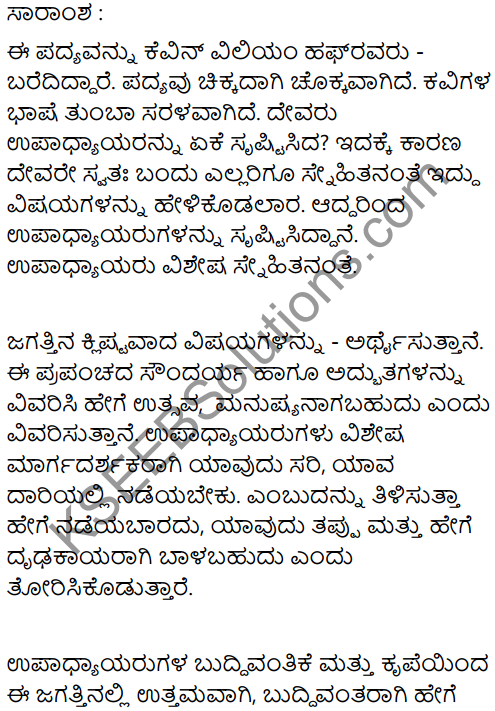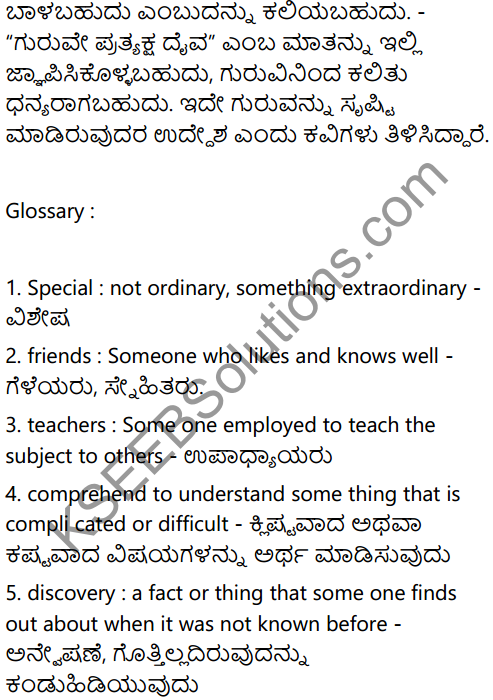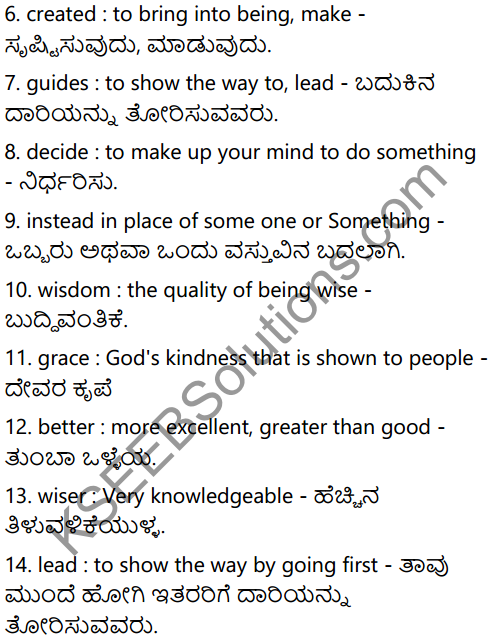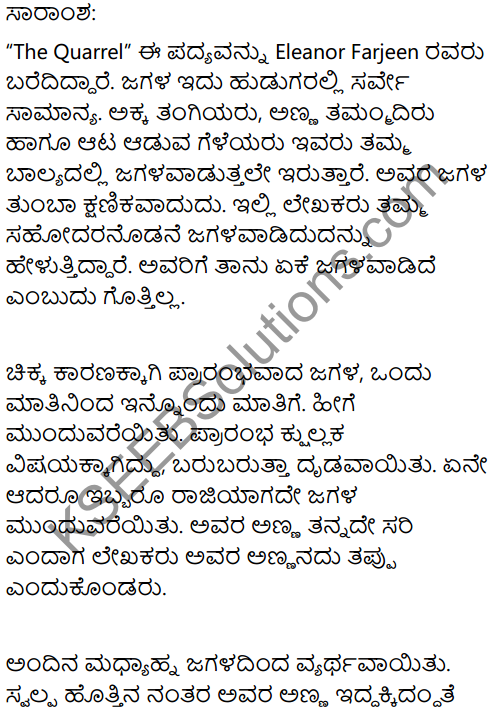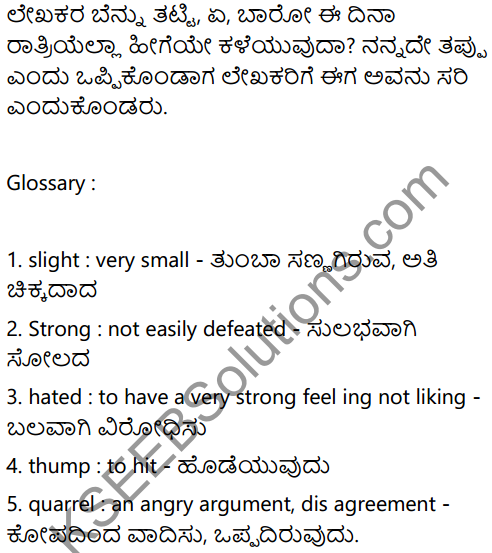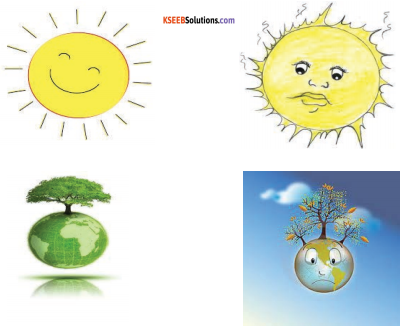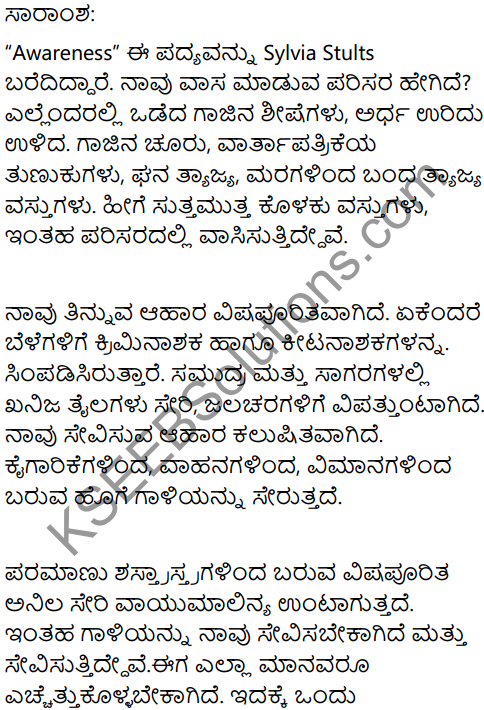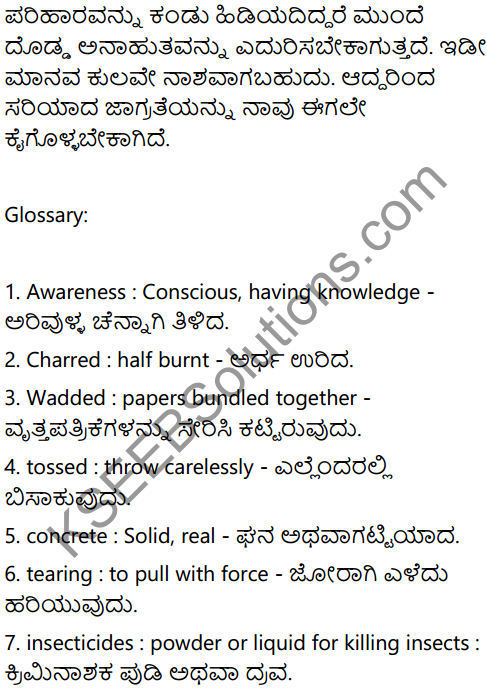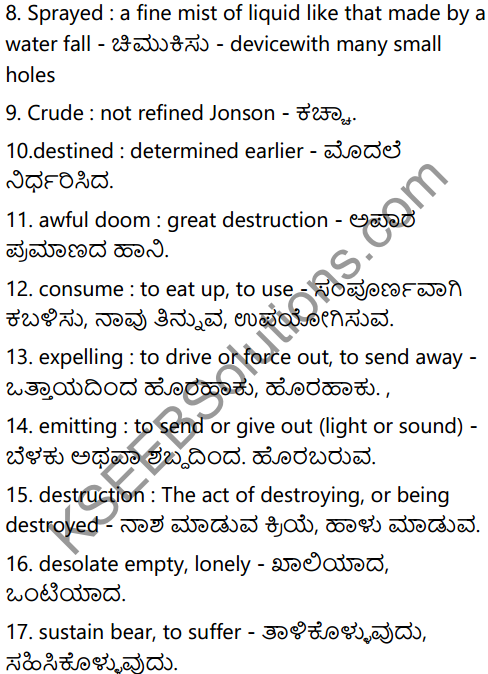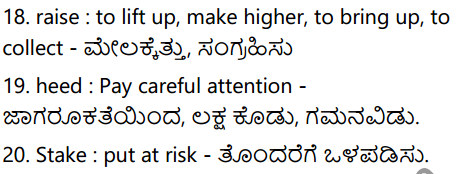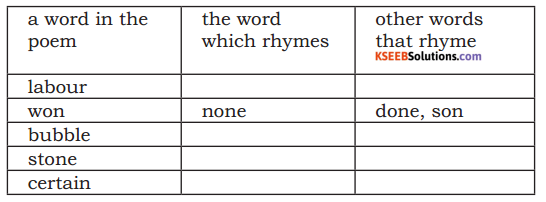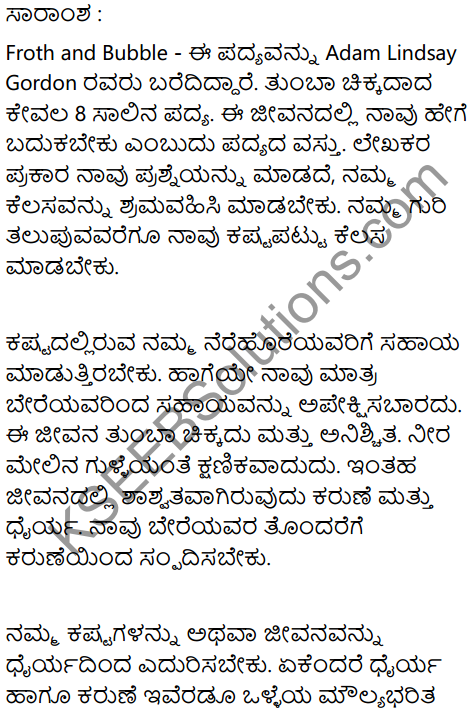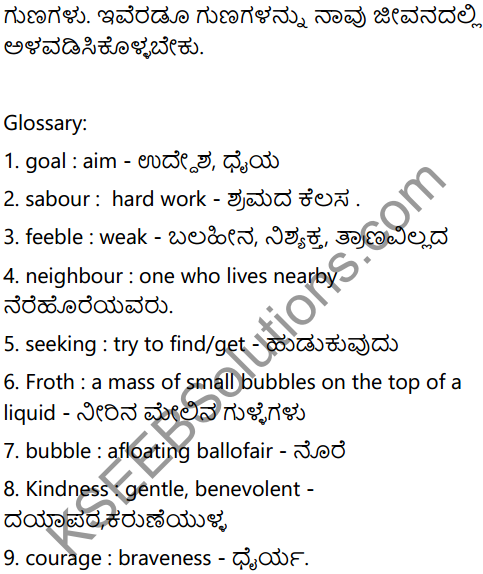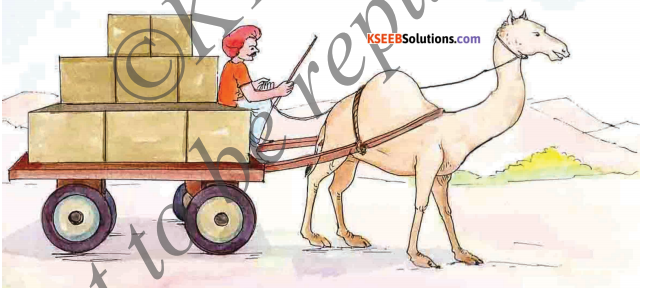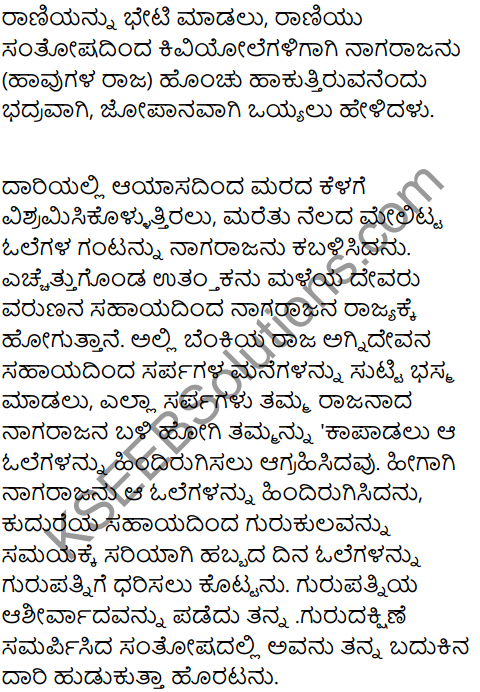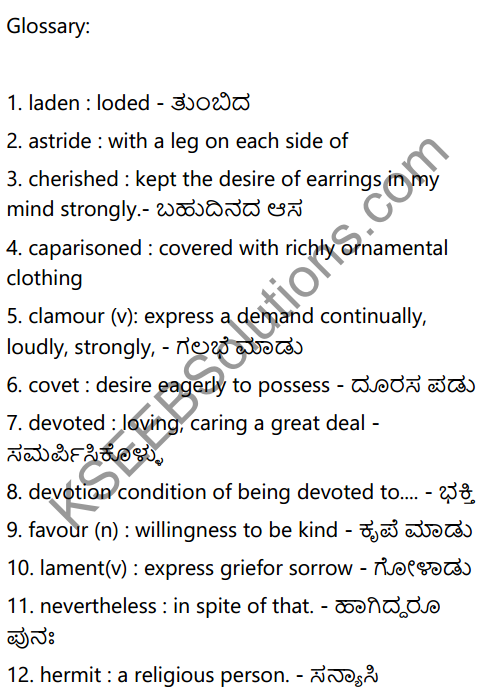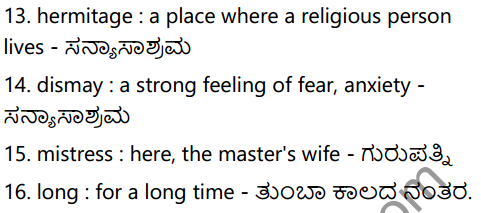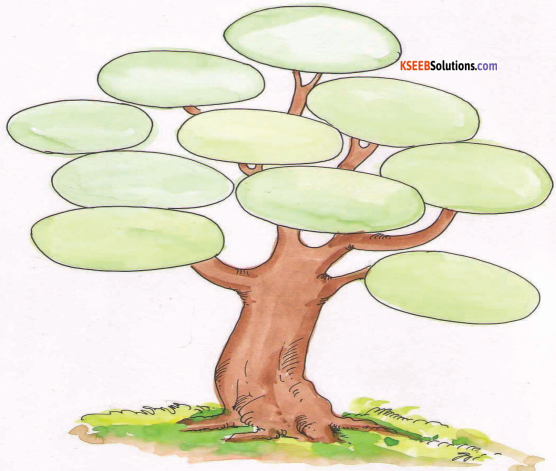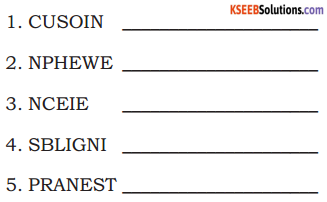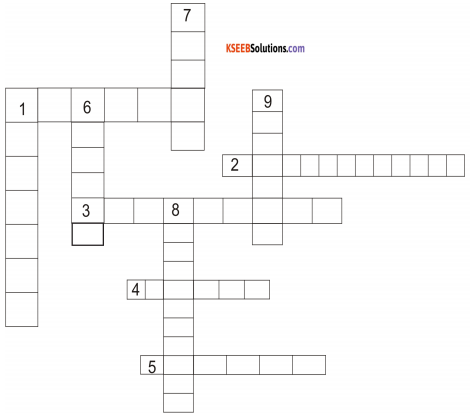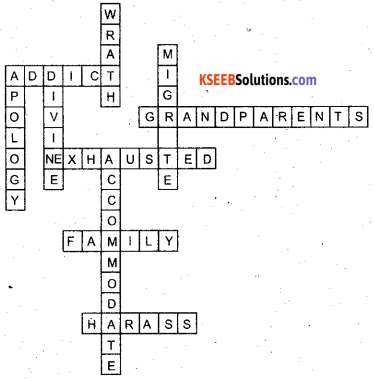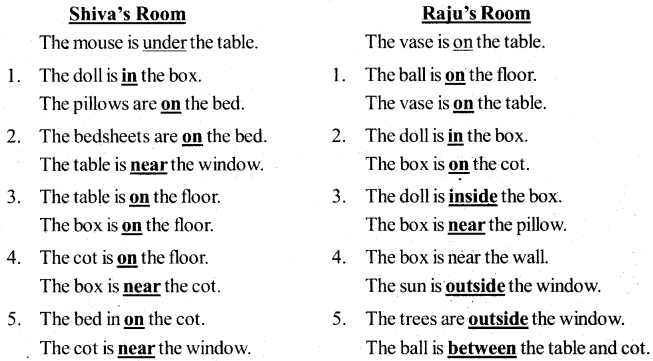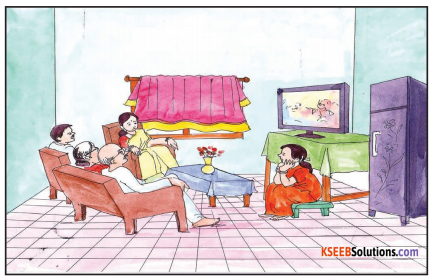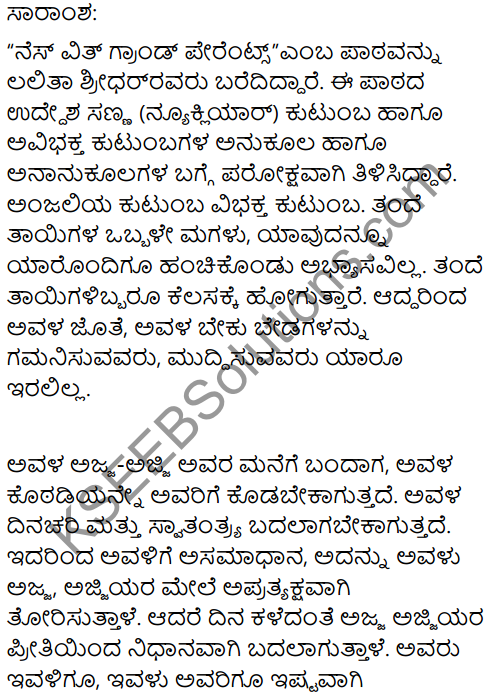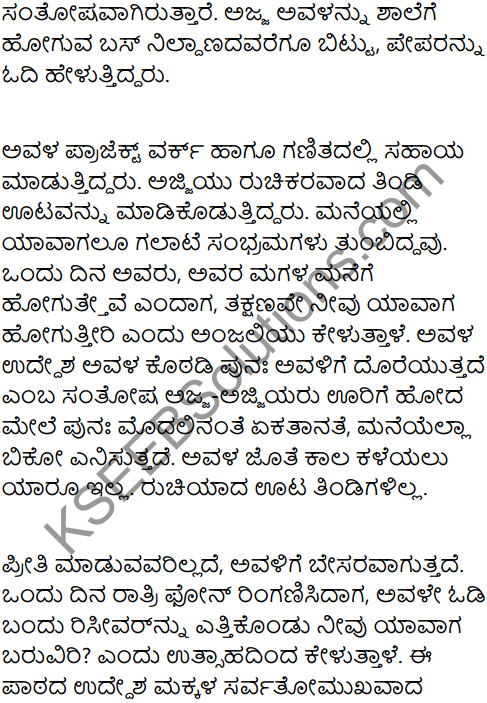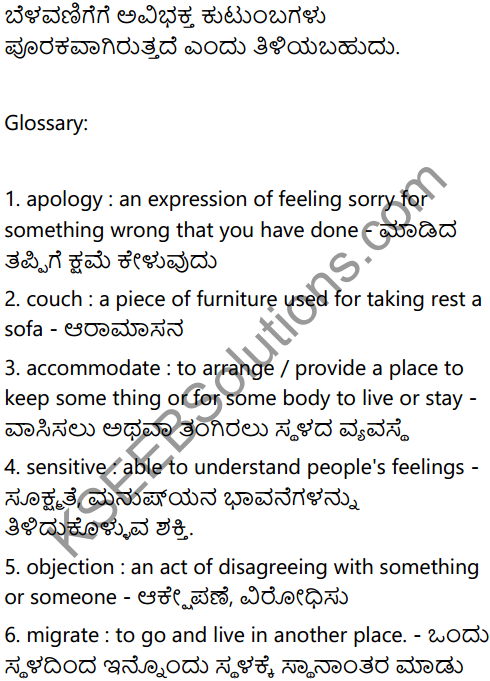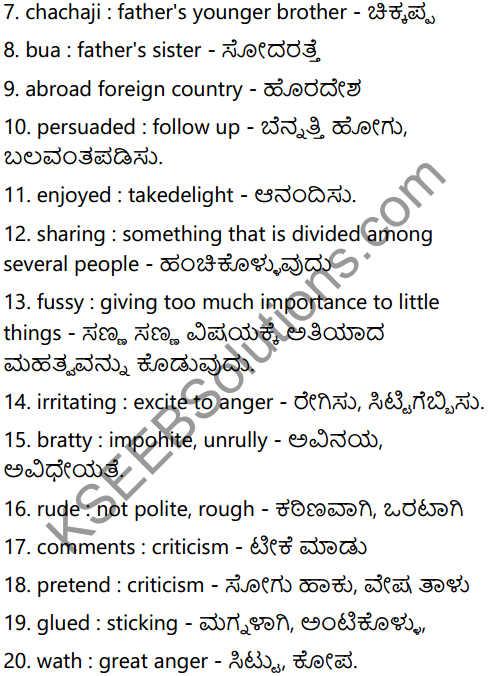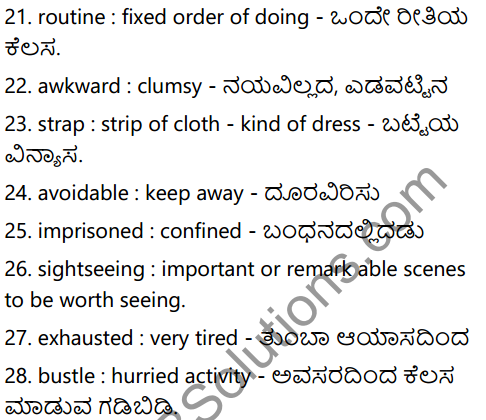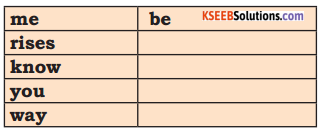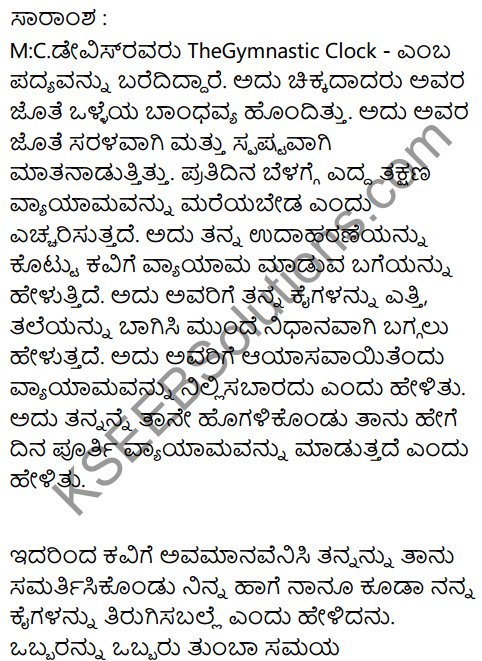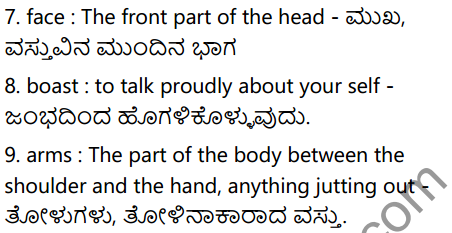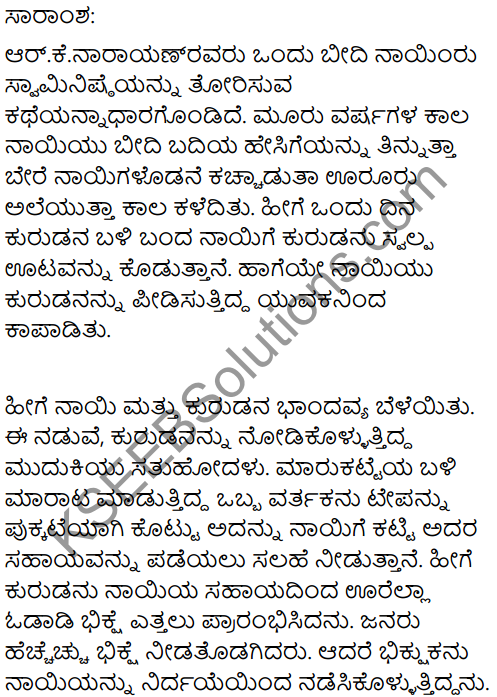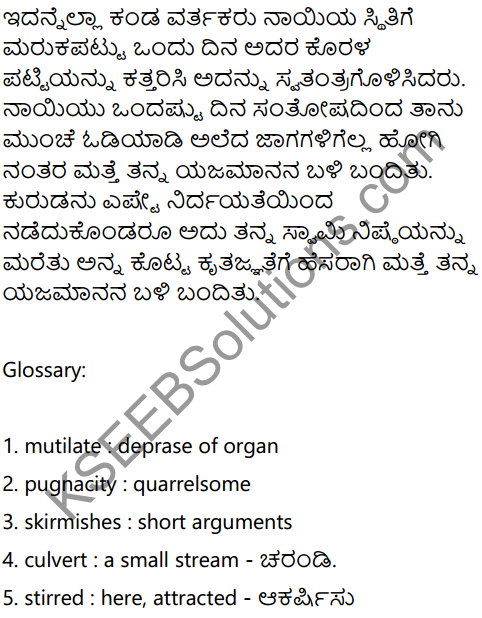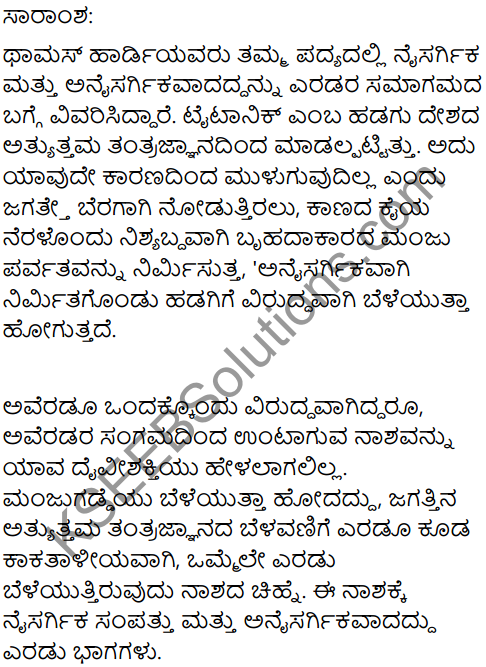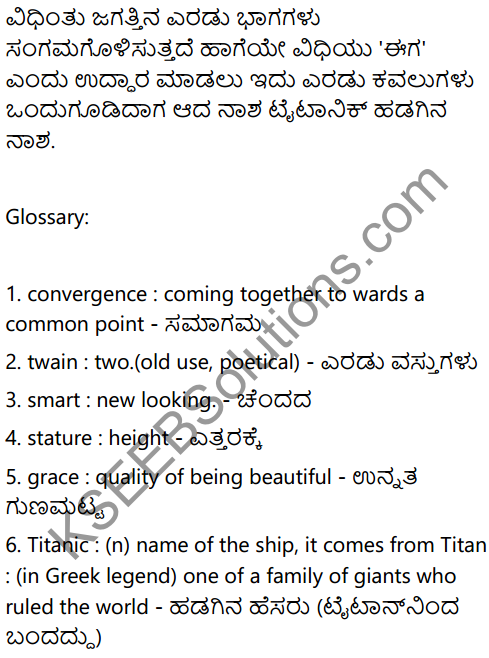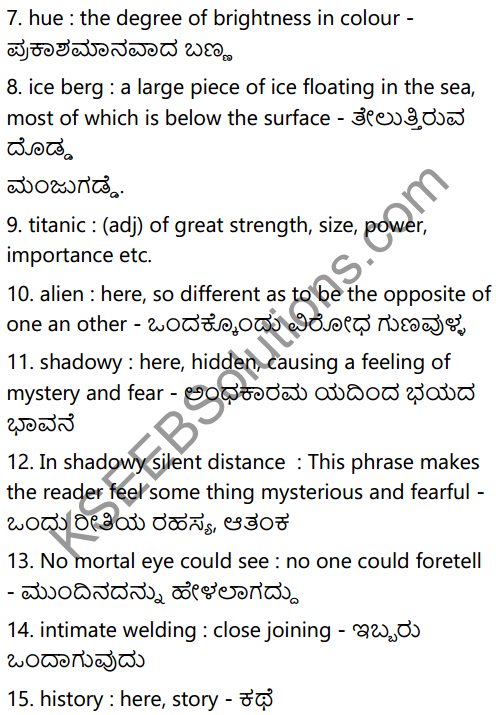KSEEB Solutions for Class 7 English Poem Chapter 3 Meadow Surprises is available Online for students. Revise all the concepts of Chapter 3 Meadow Surprises Questions and Answers easily taking help from the KSEEB Solutions. Download the KSEEB Solutions for Class 7 English PDF free of cost and get good scores in the board exams. English Chapter 3 Meadow Surprises Questions and Answers, Summary, Notes Pdf, KSEEB Solutions for Class 7 English Karnataka State Board Solutions help you to revise complete Syllabus.
Karnataka State Board Class 7 English Poem Chapter 3 Meadow Surprises
Enhance your subject knowledge through the KSEEB Solutions for Class 7 English Meadow Surprises Questions and Answers lay a stronger foundation of your basics. Verify your answers with the Karnataka State Board Class 7 English Chapter 3 Meadow Surprises with Answers provided and know where you went wrong.
Meadow Surprises Questions and Answers, Summary, Notes
I. Come, let us talk about this poem. Take turns with your partner to ask or answer these questions. Explain why you think your answer is correct Quote from the poem when necessary. Write down your answers.
Question 1.
Meadows hide secrets.
Answer:
True.
Question 2.
The grass in this meadow has grown tall
Answer:
True.
Question 3.
What does the poet mean by the words ” velvet grass ”?
Answer:
“Velvet grass” means the grass is so silky and soft so that poet advices to walk slowly on that delicate soft grass as cozy as velvet.
Question 4.
What do butterflies do when they flutter down and sit on flowers? Butterflies drink nectar from the
Answer:
flowers and while doing so, it seems to use its mouthparts like a drinking straw.
Question 5.
What is a buttercup?
Answer:
Buttercup is a wild plant which bears yellow flowers.
Question 6.
Why did the rabbit hop?
Answer:
The rabbit was sitting very still. When it was scared, it hopped to escaped from the danger.
Question 7.
Imagine you are sitting by a brook. Write two or three sentences about the sounds you hear.
Answer:
By sitting by the side of the brook we can hear the sound of moving water, the muttering sound of birds, rabbits in their nests, and burrows.
Question 8.
What are meadow houses?
Answer:
Meadow houses are nothing but the burrows in the ground, a nest beneath tall grasses, and the ant’s amazing mound.
Question 9.
What is a dandelion?
Answer:
Dandelion is a weed with large bright yellow flowers followed by rounded heads of seeds with downy tufts. These tufts when dry which can be easily carried away by the wind.
Question 10.
How does a meadow tell its secrets? (Stanza 6)
Answer:
Medows have secrets and surprises to tell. If we want to discover these surprises we have to look and hear, to find them.
For eg:
- If you look underneath a stone you may be surprised to see a mushroom growing underneath.
- If you listen in silence you may be surprised to hear a bird singing sweetly.
Question 11.
These are some “meadow surprises”, can you add one more surprise?
Answer:
Yes, If we keenly observe the grass in the Meadow we can see crickets, grasshoppers, and millipede crawling along.
D. Writing
Read carefully the two paragraphs given below. Supply the words that are not given.
Last week was an eventful week. We went to Safari Park last week. Riding through it, we saw a t i g e r lazing in the z o o. We t h e n went to a d e n. There, even as we were looking at it, a p e a c o c k spread its feathers and d a n c i n g.
My friend Neeta came back from Brookfield in the U.S. She said she actually w a t c h e d a grizzly bear. So, we had some exciting moments last week.

But my most exciting moment was when I was walking across a m e a d o w. The l a n d was flat, but suddenly a rabbit hopped up as if from no w h e r e. It looked like m a g i c. I went near to ex p l o r e. The r a b b i t had dug a b u r r o w in the meadow and made a h o u s e for himself and his family.
Meadow Surprises Additional Questions
Match the following:
| A | B |
| 1. Grass | a. drinking straws |
| 2. butterfly | b. velvet |
| 3. Rabbit | c. explore |
| 4. Dandelion | d. parachute |
| 5. Meadows houses | e. scares |
Answer:
1. c, 2. a, 3. e, 4. d, 5. c
Question 1.
How does the poet describe Dandelion?
Answer:
The poet says dandelions are fuzzy heads. Because some flowers have dried. They were golden colored a few days ago. The Petals look like any parachutes now. If we blow on a flower the petals will flutter away like open Parachutes.
Question 2.
What does the poet ask to explore?
Answer:
The poet asks to explore the wonderful things of nature, the meadow houses, the burrows which are the houses of rabbits, nests of birds under the tall grasses, the finest amazing ant’s mound. The poet asks to explore the beauty and silent features of meadow.
Question 3.
Why we may scare a rabbit according to the poet?
Answer:
As we walk over the Meadow the sound of our footsteps may scare the rabbit who is sitting still and you may not see him until he hops away.
Multiple Choice Questions
Question 1.
Meadows hide ______ .
a) grasses
b) houses
c) mounds
d) surprises
Answer:
d) surprises
Question 2.
Butterfly looks like ________ .
a) buttercup
b) wild plant
c) drinking straws
d) All
Answer:
c) drinking straws
Question 3.
The Rabbit is scared because _________ .
a) runs away
b) hops way
c) jumps away
d) None
Answer:
a) runs away
Question 4.
Poet asks us to ______ meadow houses.
a) destroy
b) visit often
c) explore
d) None
Answer:
c) explore
Question 5.
Ant’s Hill is _______ .
a) small
b) beneath the grass
c) amazing
d) inside burrow.
Answer:
c) amazing
Meadow Surprises by Lois Brandt Phillips About the Author:
Lois Brandt Phillips was born on April 22, 1829, was a wealthy landowner and rancher in Los Angeles County, California. He moved to Spadra in 1862 and began engaging in sheep herding and cattle raising. Lois was raised in northern Minnesota and lived in Eastern Oregon. She has found joy in observing and painting wildlife. Lois is a mother of six and an author/illustrator of two books, “Wildlife Woodcraft” and ‘Nature’s Pattern. She now lives in Klamath Falls, Oregon
Meadow Surprises Summary in English
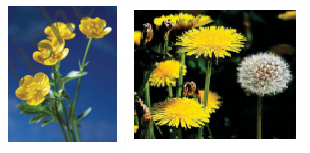
The Poem ‘Meadow Surprises’ is written by Lois Brandt Philips. She is a wealthy ranch owner who has taken up writing and painting wildlife.
In this poem, the poet tells us that Meadows has surprises. These surprises can be found if one has a keen eye and a sharp ear to observe them. We should walk softly through the velvet grass of the Meadows and listen to the brook (small stream).
We can also see a beautiful butterfly. Which will come and rest upon a buttercup flower and unfold it coiled ‘drinking straws’ to sip the nectar up? The poet refers to the butterflies tube-like mouth as ‘drinking straws’.
As we walk along the Meadows we may scare a rabbit who is sitting very still to hide from predators. We can know we have scared a rabbit only when it hops away fast.
As we walk along the Meadows we can blow on a dried fuzzy dandelion flower and watch its petals flutter like airy parachutes all over the Meadow Not only people have built houses on the Meadows. Many animals arid birds have also taken shelter there. We can explore burrows of rabbits or otters we can see birds, the nest’s underneath the fall grasses, and also the anthills which are an amazing piece of architecture.
Meadow Surprises Summary in Kannada
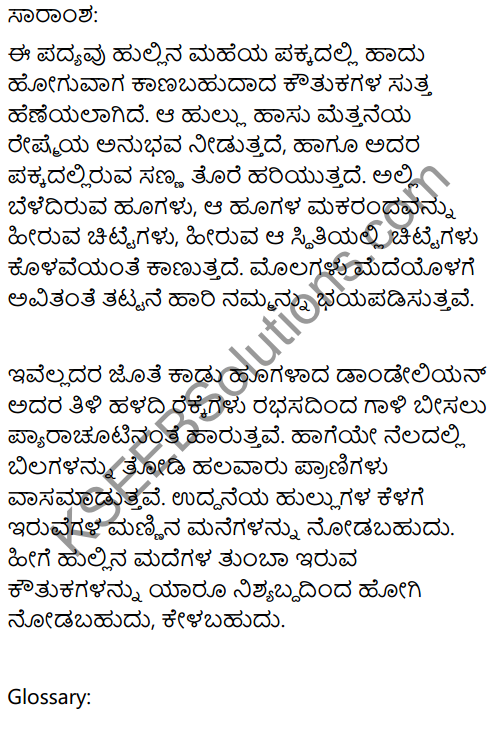

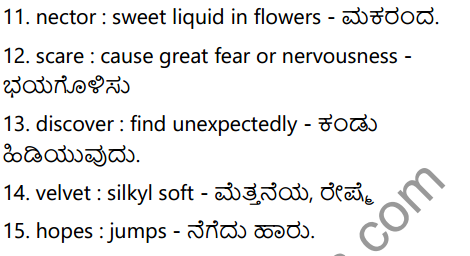
The above furnished information regarding KSEEB Solutions for Class 7 English Chapter 3 Meadow Surprises Questions and Answers is true as far as our knowledge is concerned. If you have any doubts feel free to reach us via the comment section and we will reach you at the soonest possible.


